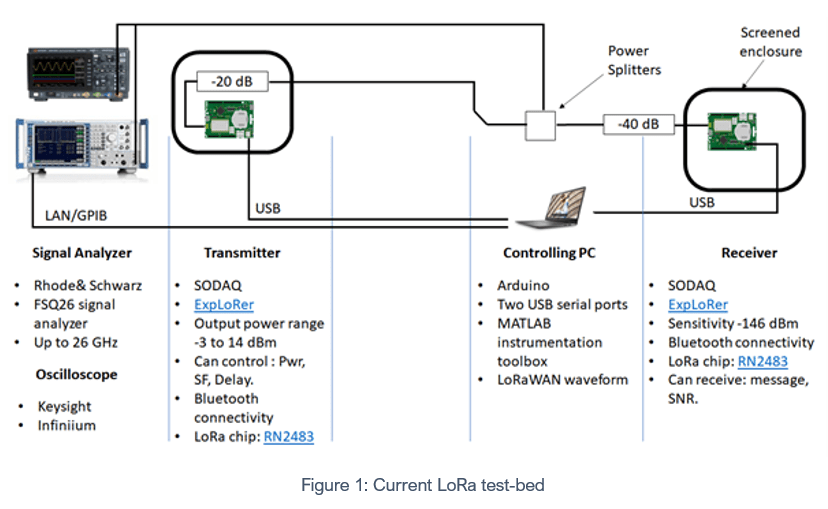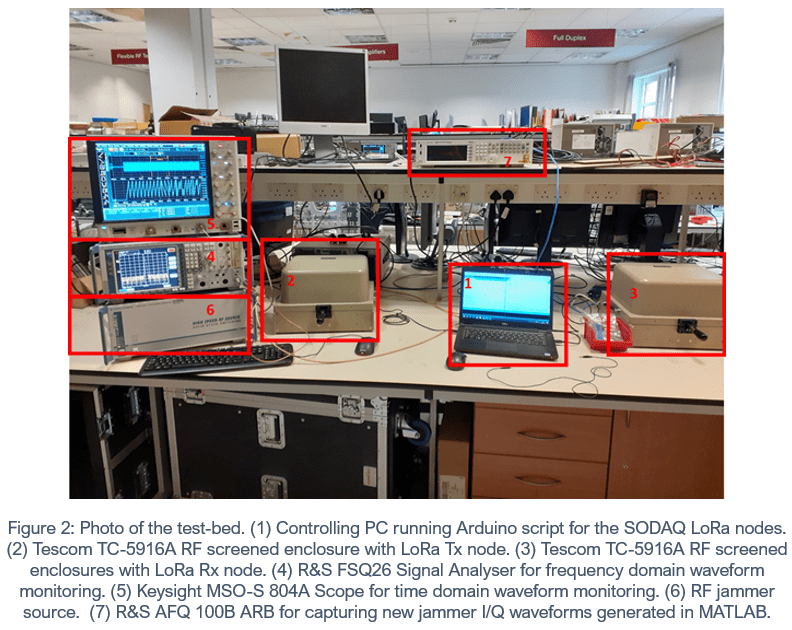SWAN’s postdoctoral researchers, with valuable input from our industrial partners, have built their first Radio Frequency (RF) penetration test-bed (pen-test facility) using LoRa as the candidate air interface technology. A pair of SODAQ explorer evaluation modules populated with the RN2483 LoRaWAN transceiver and stack have been deployed in a pair of Tescom TC-5916A RF screened enclosures. This facility will be used to gain a greater understanding of the LoRa physical layer (PHY) as part of SWAN’s RF hackathon activities.
To complement the RF pen-test facility, a LoRa MATLAB simulator has been also developed, and currently optimised, in order to compare results between simulation and test-bed results, once appropriate calibration is applied. Moreover, input data and waveforms to the pen-test can be generated via the MATLAB simulator.
LoRa Test Set-up
The explorer modules are powered and controlled via USB using the shielded connectors on the Tescom boxes, and cabled RF connections is provided via attenuators and doubled screened coaxial cable, again using precision RF connectors on the screened enclosers. The set-up is illustrated in Fig. 1.
As shown in Fig. 1, waveform monitoring and penetration injection testing is implemented by means of cabled RF couplers, making use of extensive test and measurement equipment in the Communication Systems & Networks lab.
At the time of writing this article data communications has been established, link budget, receive sensitivity and RF isolation measured. The next steps are to conduct a family of RF attacks on the LoRa PHY, benching marking these in terms of RF power required, degree of disruption achieved and also calibrating a MATLAB based LoRa bit level simulation tool.
Fig. 2 shows a photo of the test bed.


